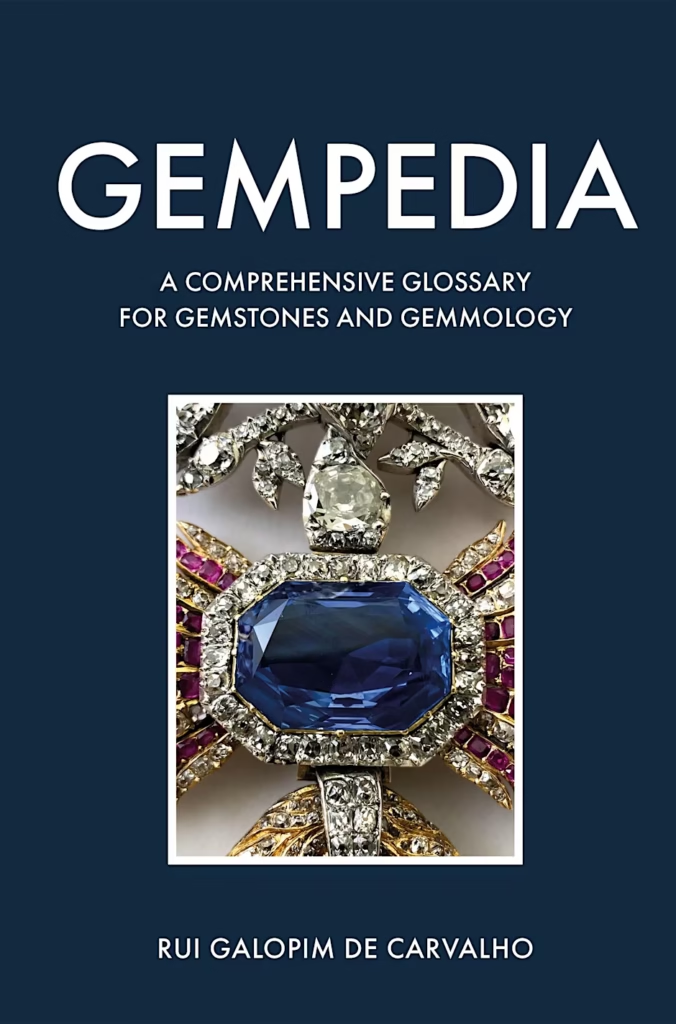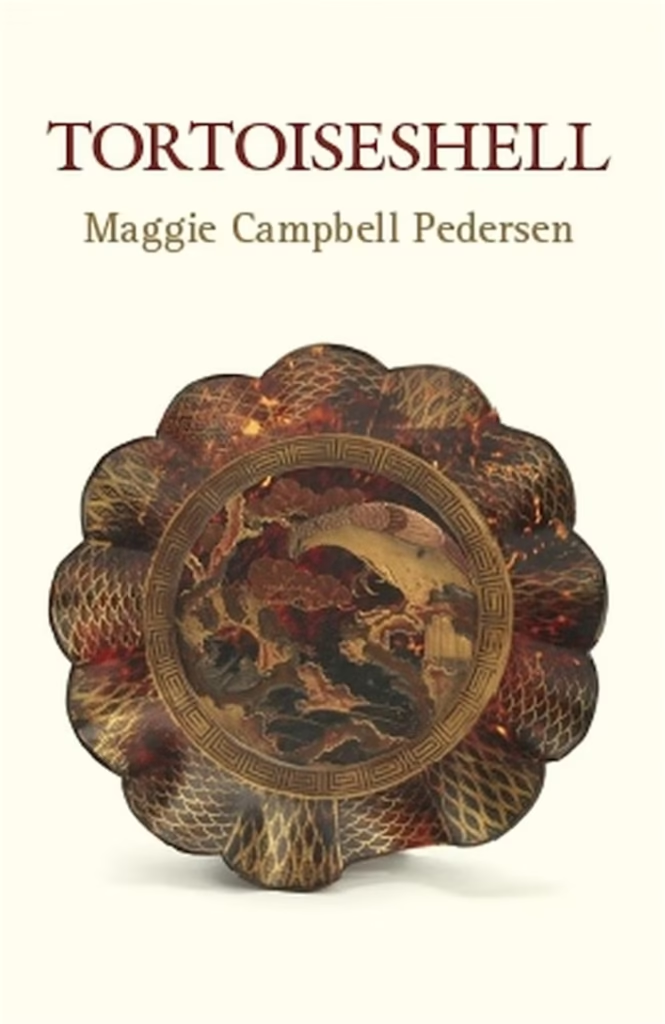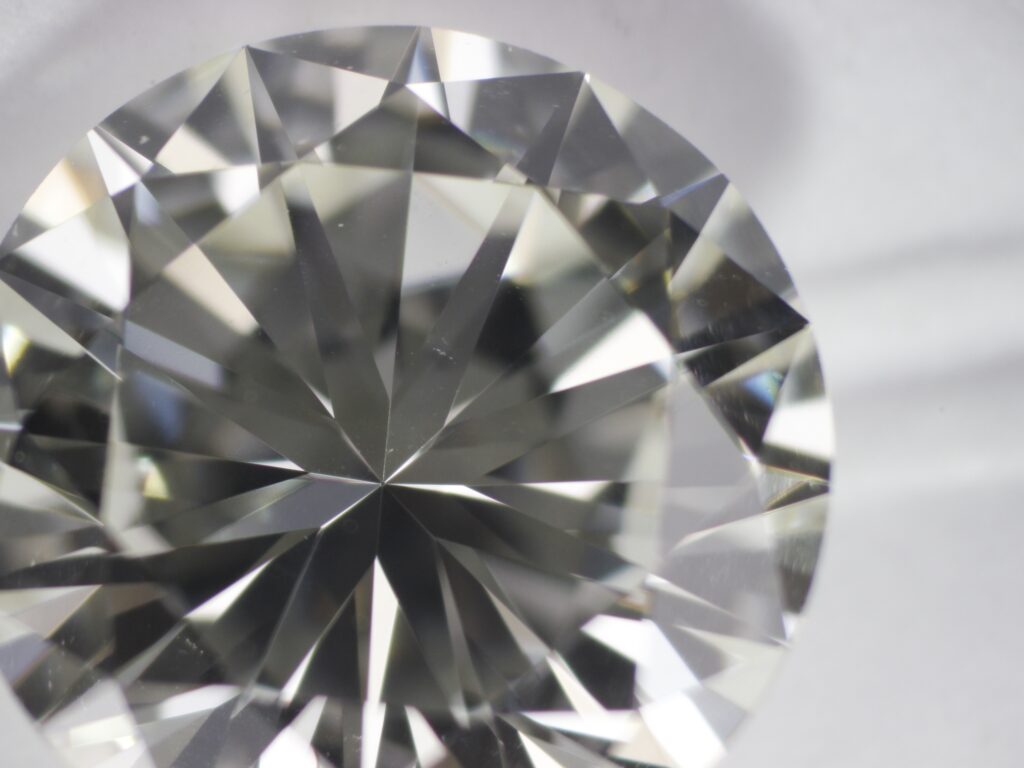
When we look at faceted gemstones, we see and appreciate their colours, transparency, brilliance and fire. What we sometimes take for granted, however, is the fashioning that makes it possible to enjoy these visual effects. To explain more, Gem-A Gemmology Tutor Pat Daly has created this useful introduction to diamond cut and shape, incorporating faceting techniques, symmetry, quality factors, and the 4Cs. Fashioning can be considered to include the style of diamond cuts, the shapes of stones, and the quality of the cutting. All three can impact the appearance of a finished gemstone.
Gemstone Cutting and Faceting Styles
Cutting styles include carvings, beads and cabochons as well as faceted stones. The main faceting styles are the step cut, in which most of the facets are long, with parallel sides, the brilliant cut, with mostly triangular or kite-shaped facets, and the mixed cut, in which elements of two or more styles are combined. All these styles are used for coloured stones, but most diamonds are fashioned as step-cut and brilliant-cut stones, or modifications of them.
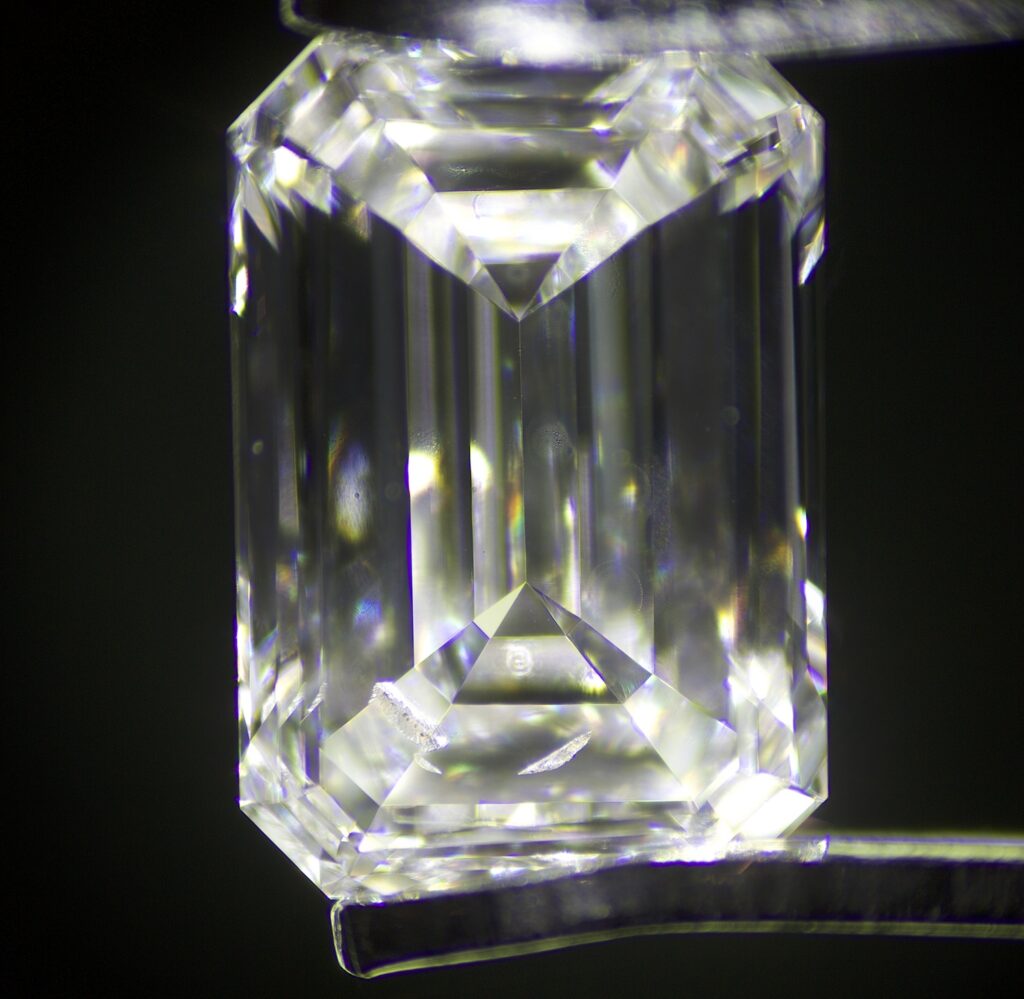
Stones which are cut in these styles may have a range of shapes. Step cuts usually have angular outlines; squares, oblongs or kites, with or without truncated corners, and these are generally used for diamonds, but step-cut coloured stones may be round, oval or other shapes as well.
What Does a Brilliant Cut Mean?
Similarly, brilliant cut usually refers to a stone with a round girdle, but it can be modified to oval, pear-shaped, cushion-shaped, or sub-triangular, marquise (pointed at both ends) or heart-shaped. The distribution of facets is much the same as it is on round stones, but their shapes are distorted to accommodate the change in outline. Diamonds of these shapes may be called, for example, oval cut or oval shaped, but may be called simply oval diamonds.
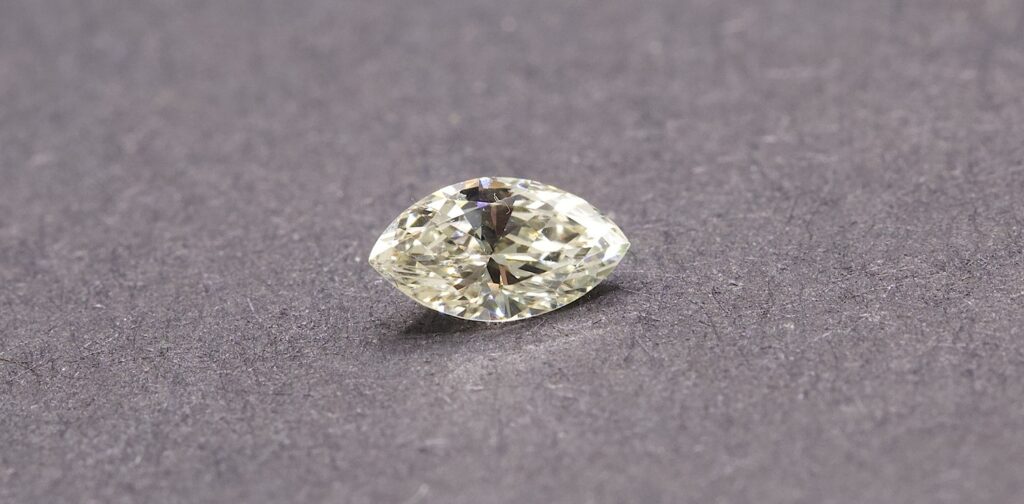
Apart from necessary changes to facet shapes, other changes may be thought desirable. The pointed ends of some pear and marquise-shaped diamonds, for example, have a kite facet replaced by two triangular facets to make them less vulnerable to damage.
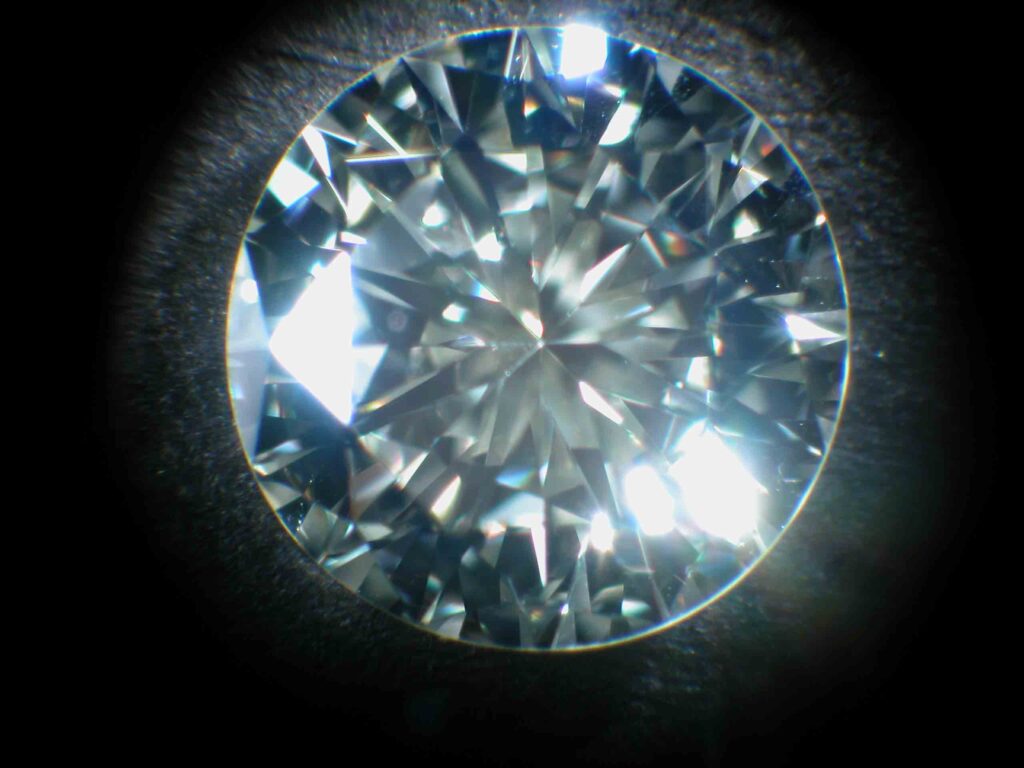
The standard number of facets on a brilliant cut diamond is 58 if a culet, a small facet truncating the pavilion, is present, otherwise there are 57. This rarely changes, though modified styles are offered by individual cutting firms, and a few of these become widely known.
A relatively recent style, derived from earlier types of square diamonds, is the princess cut, which has become very well known to consumers since its development in the 1960s. Apart from the 8-sided table facet, it has a mixture of triangular, kite and strip-like facets, which are designed to enhance the brilliance of square to oblong stones; this style is sometimes called a square brilliant.
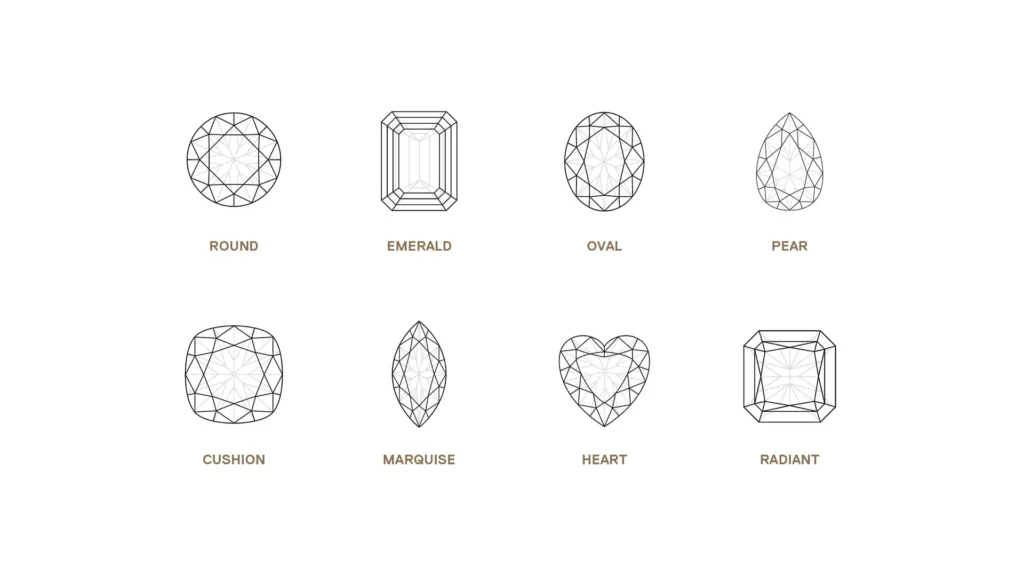
The Legacy of Diamond Faceting
It is thought that diamond faceting began with the replacement of a corner of an octahedral crystal by a table facet. As diamond manufacturing progressed, facets were added to increase the brilliance of stones and their sparkle (the reflection of light from different facets as the stone is turned). Corners were rounded to produce cushion shapes, and the standard brilliant cut was developed. The machinery needed to make diamond girdles round was developed in the late 19th century.
In the early part of the 20th century, Marcel Tolkowsky, who belonged to a family of diamond cutters and who trained as an engineer, used mathematical methods to calculate the angles and proportions necessary for a diamond to produce as much fire and brilliance as possible. Tolkowski’s work remains the basis for the design of the modern round brilliant cut, though some adjustments have been made since, and it is the most popular cut style for diamonds.
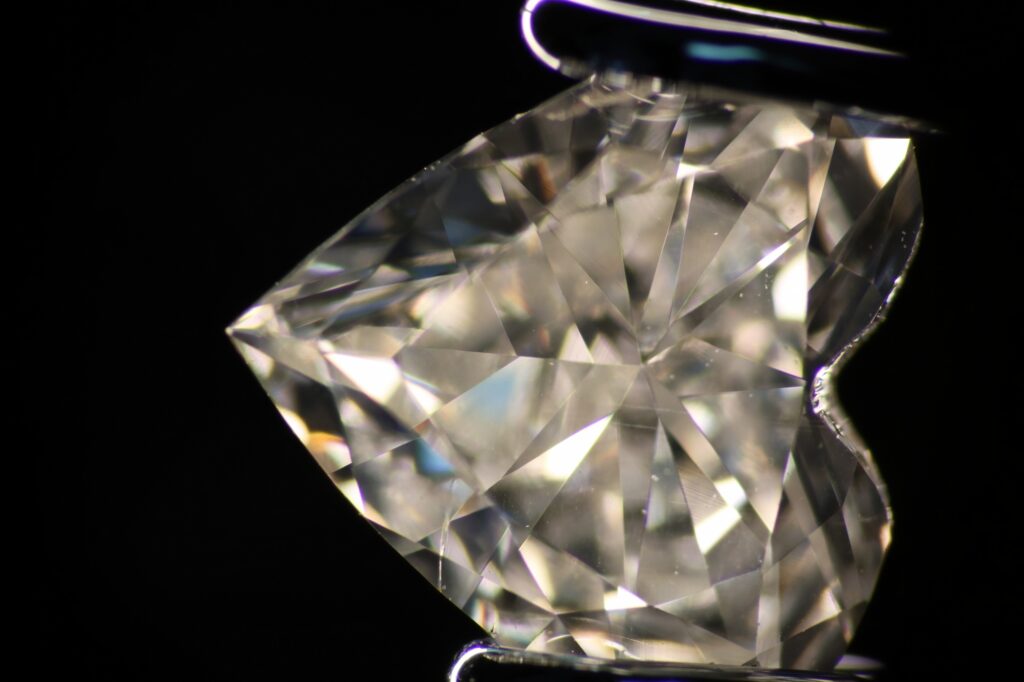
Understanding the Quality of Diamond Cutting
The quality of cutting includes some very important factors which control the appearance of a faceted gemstone. This is especially the case for diamonds, which rely on reflection and dispersion for their beauty, not just a desirable colour. The proportions, symmetry and polish all contribute to the quality of the finished stone. Diamonds must be proportioned so that as much of the light that falls on a stone is reflected, directly from its surface or from inside the stone, so that it emerges through the crown facets.
The amount of fire displayed by a stone may be raised by cutting a high crown and a small table facet, increasing the likelihood that white light will be split into spectral colours as it enters and leaves the stone through non-parallel facets. Since brilliance requires the reflection of white light, it is not possible to maximise both this and fire in a stone, so a compromise must be reached so that both are optimised.
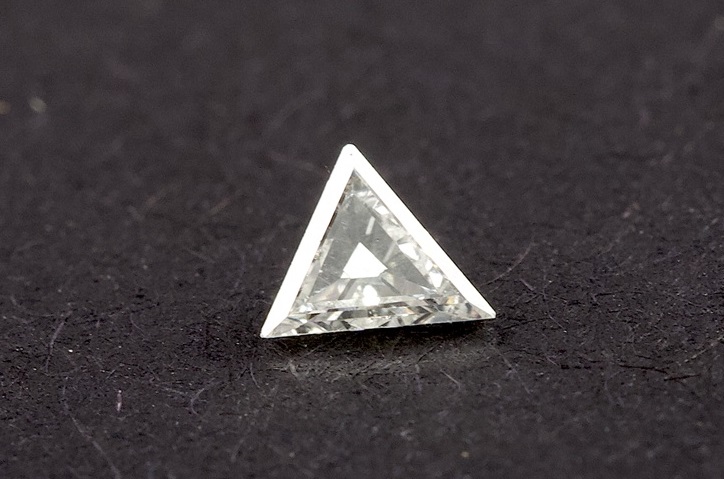
Symmetry affects the pleasing appearance of a stone and its ability to handle light. The term refers to the outline of the girdle or how closely the round, square or other shape approaches geometric perfection. Weight conservation is an important consideration in diamond cutting, and shapes are often slightly distorted, though this may be evident to the eye. In addition, facets should be correctly distributed and have the right relative sizes and proportions.
For diamonds, cut is one of the 4Cs which determine the quality of a faceted diamond. Laboratories may offer cut grades for brilliant cut stones, which divide them into several categories based on measured proportions, symmetry, and polish. This is important because it affects the ease with which light may enter, reflect within, and leave the stone.
In addition to measurements, efforts are being made to incorporate the perceptions of observers into the assessment of cut quality so that experimental and theoretical data can be combined to decide the relative merits of fashioned diamonds. As technology advances, so too does the art of diamond cutting.
Main image: Round brilliant-cut diamond, photographed by Henry Mesa.
…………………………………………………………………………………………………..
If you would like to learn more about Gemmology, you can sign up for our mini online course GemIntro or explore our accredited programmes

